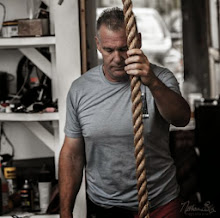It's pretty ominous to label a blog entry "strokes". What I'm going to talk about here is the "strokes" that are used in working with animals. I've been asked by many people about the differences between a Structural Integration stroke and those used in other modalities, like massage.
My answer is that there is no such thing as an SI specific stroke and that all other strokes come in two flavors: those that are disruptive and those that are organizing the tissue. The focus of SI is organization of the body. As such most of SI occurs with the appropriate application of an organizing stroke or touch, which usually follows some disruption of a tissue holding or lesion.
Some Background
About 15 years ago the AMTA brought together a group of high level practitioners to lay out a map of the different types of body therapy. Two of the members were Rolfers, Tom Myers and Jeff Maitland. This group came up with a "hierarchy" of body therapy in three distinct paradigms: relaxation, symptom relief and wholism. Each level of the hierarchy includes aspects of the level below it but not the one above it. So, relaxation can occur when a symptom is relieved but rarely--I won't say never--does a relaxation modality relieve a symptom, nor should it be used for this. The paradigms are labeled first, second and third, and have come to be used in the Rolfing community to describe different types of interventions. For instance, a Rolfer might say that helping a vertebral segment that is stuck in a rotation to de-rotate is second paradigm. Pure Rolfing is considered,by us Rolfers,to be third paradigm or wholistic in its view and application. Of course one may move up and down this paradigm ladder to achieve a specific goal.
Back to the strokes.
Most people are very good at disrupting the tissue but organizing is a skill that takes years to learn. This is why most of the description of body patterns lend themselves to disruption; knots, spasm, holding... Contrast this with third paradigm descriptions like; the feet are not relating to the knees,or there's a strain in the AO which is causing a rib to come up, etc.
What this leads to is a plethora of modalities which all aim at symptom relief through disruption with very little relational, or whole body organization consideration--I'm not saying none just little. This focus on disruption leads us to create measurement tools like Myofascial or Body Mapping (this is a system developed by Sharon Giammetto Ph.D, PT, who copy righted the term). These systems focus our attention on the "problem" holding areas that need to be released rather than on the whole body organization. If one is releasing holding patterns than everything is good, even if the ultimate cause of the pattern remains.
Don't get me wrong, the release of these holdings, if you will, is highly effective in helping a body. If there is a restriction to blood flow to an area and the restriction is removed this is beneficial to the body. It's just not SI, it's second paradigm work of relieving symptoms, which is not a bad thing.
Modalities like sports massage, neuromuscular, MFR... are all second paradigm. Very effective but not at the top of the hierarchy. Most of what people call SI, is, as I mentioned before, second paradigm until it becomes relational. Too often the new SI practitioner gravitates towards the second paradigm modalities to provide them with some "ground" that pure SI work seems to lack.
Dr. Rolf gave us a series of sessions that provide us with a container or safety net while we practice and learn SI. She asked us to stay with this program for at least 5 years, until we could learn from it how a body could be organized.
She admonished us that anyone can take a body apart but few could put one back together. As such there are no SI strokes there is only an SI view which utilizes the strokes of the other two paradigms, just like a paint brush in the hands of a house painter puts paint on a wall while in the hands of an artist creates art. (No offense to house painters.)
Monday, December 29, 2008
Subscribe to:
Post Comments (Atom)




No comments:
Post a Comment